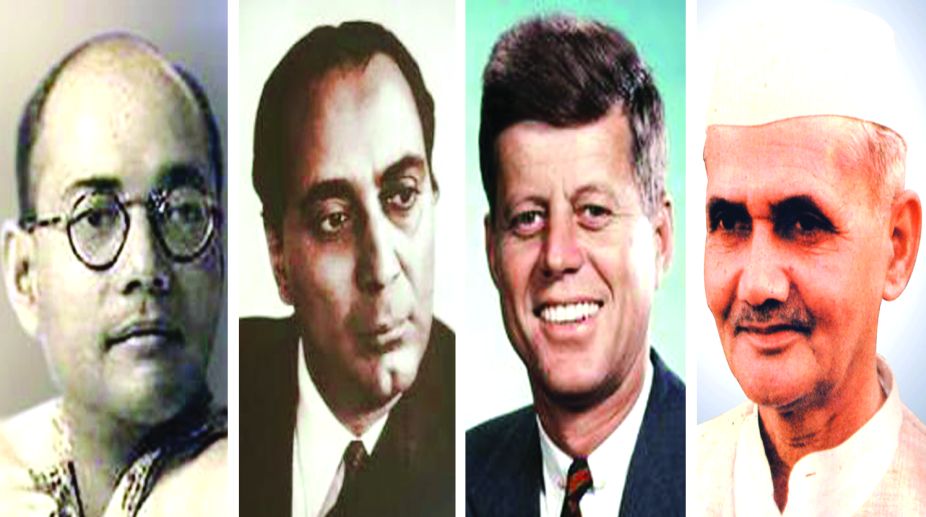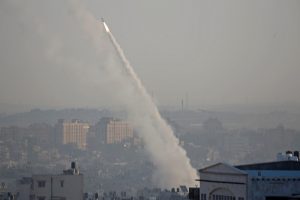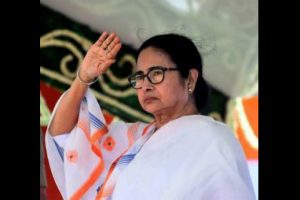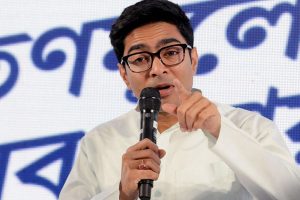A “genuine” murder or death committed or caused by a genuine conspiracy can arouse curiosity. Apart from Netaji’s mysterious death in a plane crash, there are several conspiracies in the popular imagination. One such is the death of Homi J. Bhabha, generally acknowledged as the father of India’s nuclear power. He was killed when Air India flight 101 crashed near Mont Blanc, Switzerland, on 24 January 1966. A popular conspiracy theory had blamed the CIA, which is said to have executed an agenda to paralyse India’s nuclear programme.
Bhabha was not an advocate of the atom bomb. Perhaps he was influenced by Mahatma Gandhi’s strong aversion towards the bomb. In 1955 he had suggested to Nehru that India should unilaterally renounce the production of atom bombs. The Prime Minister replied that India should first have the ability to make a bomb… or else the “renunciation” would not be very convincing.
Ten years later, Nehru’s successor Lal Bahadur Shastri asked Bhabha ~ in the context of the Chinese tests of 1964 ~ whether Indian scientists could manage an underground test. Ironically, when General Ayub Khan was forced to accept a ceasefire following the Indo-Pak war in 1965, flying with Bhutto to Tashkent for a peace conference with Shastri, the frail Indian premier died ~ the day after the armistice agreement was signed in January 1966.
A former CIA operative, Robert Crowley, gave interviews over a period of four years, to Gregory Douglas, a journalist, who recorded their telephonic conversations and later published their transcripts in a book titled Conversations with the Crow. He claimed that the CIA was responsible for eliminating both Bhabha and Lal Bahadur Shastri. No wonder the CIA was America’s primary player in all its subterranean narrative.
John F. Kennedy’s assassination was followed by a frantic search to track down his killers. Covertly enough, Lyndon Johnson, Robert F. Kennedy, and other top officials tried to conceal the fact that in November 1963 the United States was on the brink of invading Cuba, as part of a JFK-authorised coup. The exposure of the coup plan could have led to a nuclear confrontation with Russia, but the cover-up prevented a full investigation into Kennedy’s assassination, a legacy of secrecy that would impact American politics and foreign policy for the next 45 years. It also allowed two men who had admitted to their roles in JFK’s murder to be involved in the assassination of Martin Luther King in 1968. The ‘real’ truth is yet to be unravelled.
Eleven nuclear scientists in India died in unnatural circumstances during 2009-13, as per data furnished by the Department of Atomic Energy (DAE) in its response to an RTI query posed by a Haryana-based Rahul Sehrawat on 21 September 2015. Quite a few of the scientists and engineers working in laboratories and research centres of the department died in a blast or by hanging or by drowning in the sea. Attention has been drawn to the series of questionable deaths at the Bhabha Atomic Research Centre (BARC), as well as at the Kaiga nuclear facility, in a span of three years.
In 2013 two high-ranking engineers ~ KK Josh, chief engine room artificer at the defence ministry’s shipbuilding centre at the Eastern Naval Command, Visakhapatnam, and Abhish Shivam, chief engineer with INS Arihant, the country’s first nuclear-powered submarine in the same city ~ were found dead beside a railway track. They were allegedly poisoned before being placed on the tracks. The incident was brushed off as a routine accident and the media did not raise much hue and cry.
The spate of mysterious deaths is strikingly similar to the murder and assassination of four Iranian nuclear scientists between 2010 and 2012. Not only did the Iranian government accuse Israel of complicity in the killings in 2011 and 2012, but the authorities also arrested a number of people alleged to have carried out the assassination campaign on behalf of Mossad, the Israeli intelligence service. Also on the list of suspicion were Iranian opposition groups such as MEK, intelligence operatives from Arab countries opposed to the Iranian regime, and the United States.
In early 2011 Majid Fashi confessed to the killing of Masoud Alimohammadi on Iranian state television, confessing that he had been trained for the operation at a Mossad facility near Tel Aviv, following which he was executed in May 2012. In that month itself, Iranian authorities announced the arrest of another 14 Iranians ~ eight men and six women ~ and put the blame on an Israeli-trained terror cell responsible for five of the attacks on Iranian scientists..
Compared to the hullabaloo raised over the unnatural deaths of scientists related to Iran’s nuclear programme and the international media coverage accorded to the same, the Indian media did nothing beyond occasional reporting on the circumstances of the unnatural deaths of Indian scientists. And the slovenliness of our investigative agencies is in stark contrast to Iranian promptitude.
Conspiracy theories abound and there is a perception that Indian scientists are being killed in an attempt to thwart the country’s progress in nuclear and space research and make it dependent on enriched uranium from other countries. Another deterrent is the possibility of hostile Western reaction. The explosions that sunk INS Sindhurakshak, a submarine docked in Mumbai, in August 2013 had raised suspicions.
The Indian Space Research Organisation (ISRO) lost 684 personnel in a span of 15 years. There are conspiracy theories that foreign powers are trying to cripple the organisation. On 30 December 1971, a few years after Dr Bhabha’s death, Vikram Sarabhai, hailed as the father of India’s space programme, was found dead in a hotel room at the Halcyon Castle in Kovalam. He had shown no signs of illness the previous evening and died rather mysteriously. His cremation was performed without even an autopsy.
The fear of conspiracies has been a potent force across the political spectrum, from the colonial era to the present. But these ought not to be regarded as factual evidence against any establishment or its personnel. Conspiracy theories are sustained by anonymity. Hidden assassins and shadowy saboteurs thus roam free.
The writer is a Kolkata-based commentator on politics, development and cultural issues.











